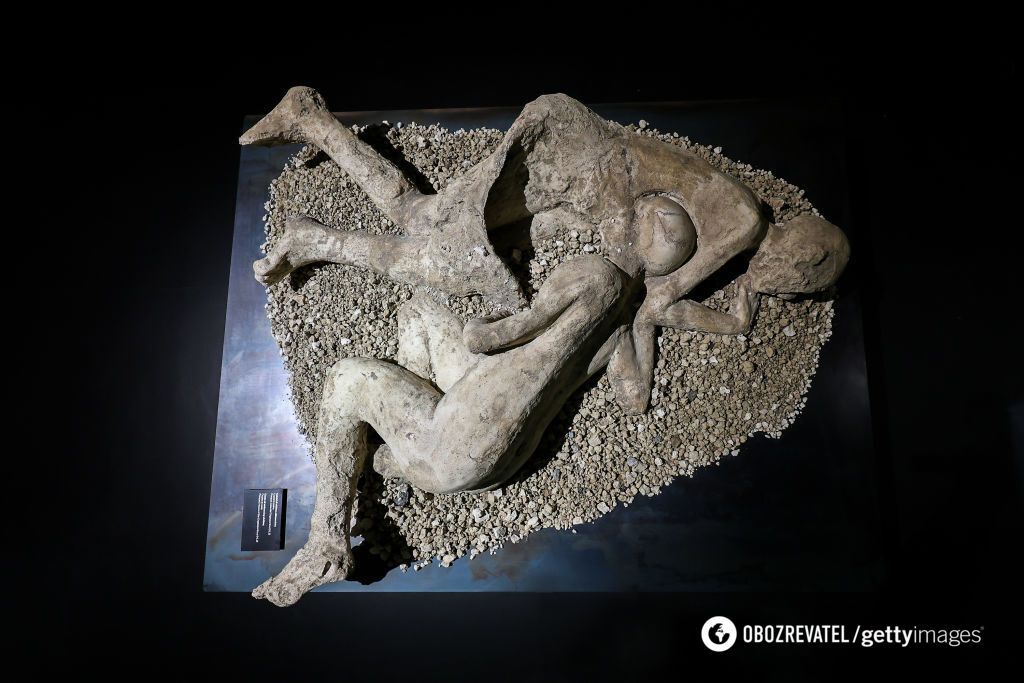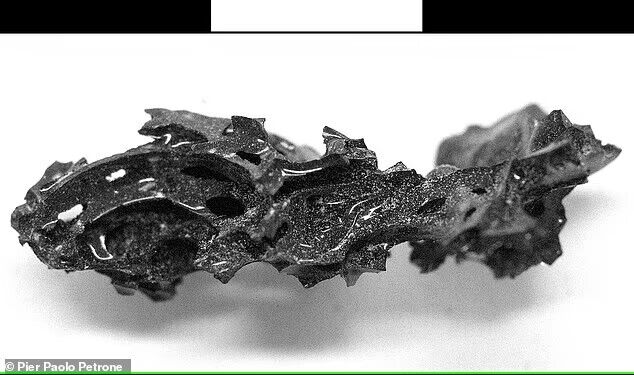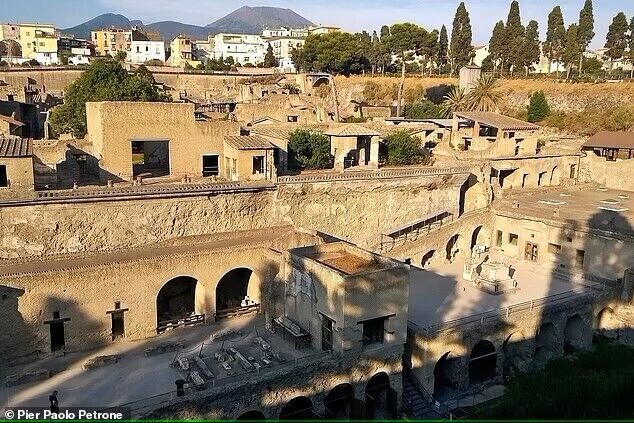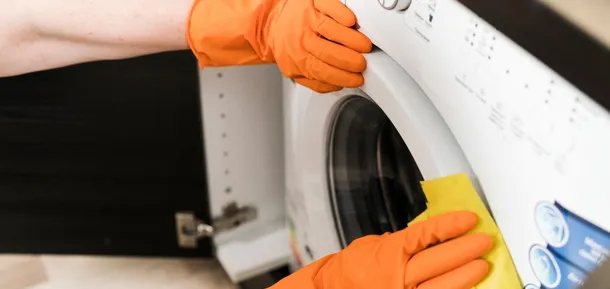News
New study reveals Vesuvius eruption was so hot it turned the victims' brains into glass
According to a new study, the eruption of Mount Vesuvius created an ash cloud so hot that the victims' brains turned to glass. Scientists have found a piece of dark organic glass inside the skull of a man who died in the ancient Roman city of Herculaneum almost 2,000 years ago.
Experts assume that the shiny clot was formed when people were killed by a very hot but short-lived ash cloud that reached a temperature of 510°C. And this piece of fossilized brain gives even more insight into what happened during the eruption of the huge volcano, writes DailyMail.
A team of scientists from the Università Roma Tre in Italy analyzed fragments of glass samples from inside the skull and spinal cord of the deceased. The experts found that the people were lying in bed when they died.
The results of the analysis, which included the use of X-rays and electron microscopy, show that in order for the brain to become glass, it must have been heated to at least 510°C before cooling rapidly.
The researchers say that this could not have happened if the person had been heated exclusively by the pyroclastic flows - avalanches containing lava chunks, ash, and hot gases - that buried Pompeii and neighboring Herculaneum. After all, the temperature of these flows did not reach above 465°C and would have cooled slowly.
The conclusion of scientists, based on observations of modern volcanic eruptions, is that an overly heated ash cloud that quickly dissipated was the first fatal event during the eruption of Vesuvius.
According to the experts, the bones of the human skull and spine probably protected the brain from complete thermal destruction, allowing the fragments to form this unique organic glass.
This is the first time that such a unique process of brain preservation has been documented, the study authors say.
The scientists explained that the burning hot cloud left a deposit of ash only a few centimeters on the ground, so the bodies were "left virtually in open air."
"Later, Herculaneum was progressively buried by thick pyroclastic flow deposits, but at lower temperatures, so that the unique presence of a vitrified [turned into glass] brain could have been preserved until today," the experts added.
Scientists emphasize that this historical event is unique because the ash and pumice that fell on the city cooled and hardened over time. This means that the effects of the eruption have been preserved in incredible detail, allowing archaeologists to look into the horrific last moments of the local residents' lives.
According to the researchers, more than 2,000 bodies were found in the area, some of them curled up or trying to escape from home.
Only verified information is available on OBOZ.UA Telegram channel and Viber. Do not fall for fakes!































